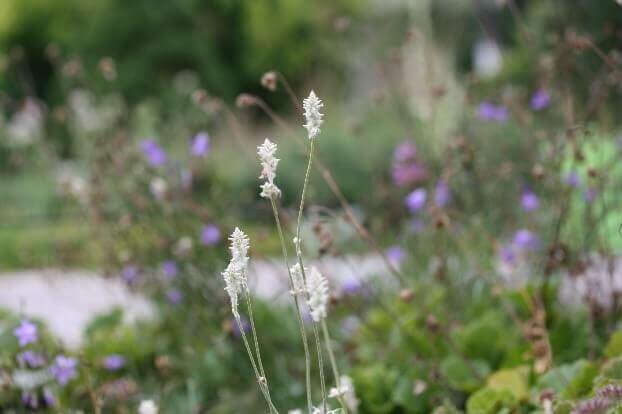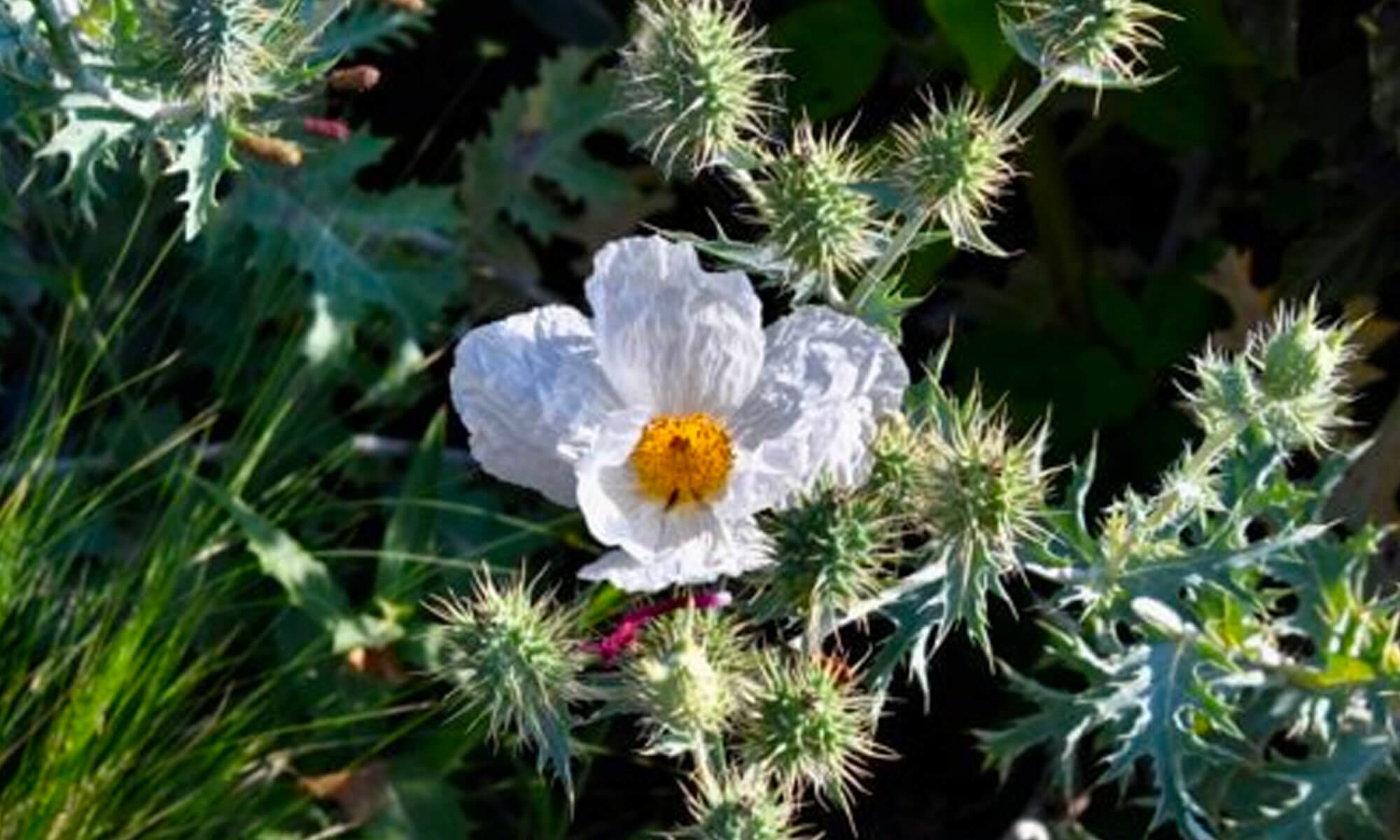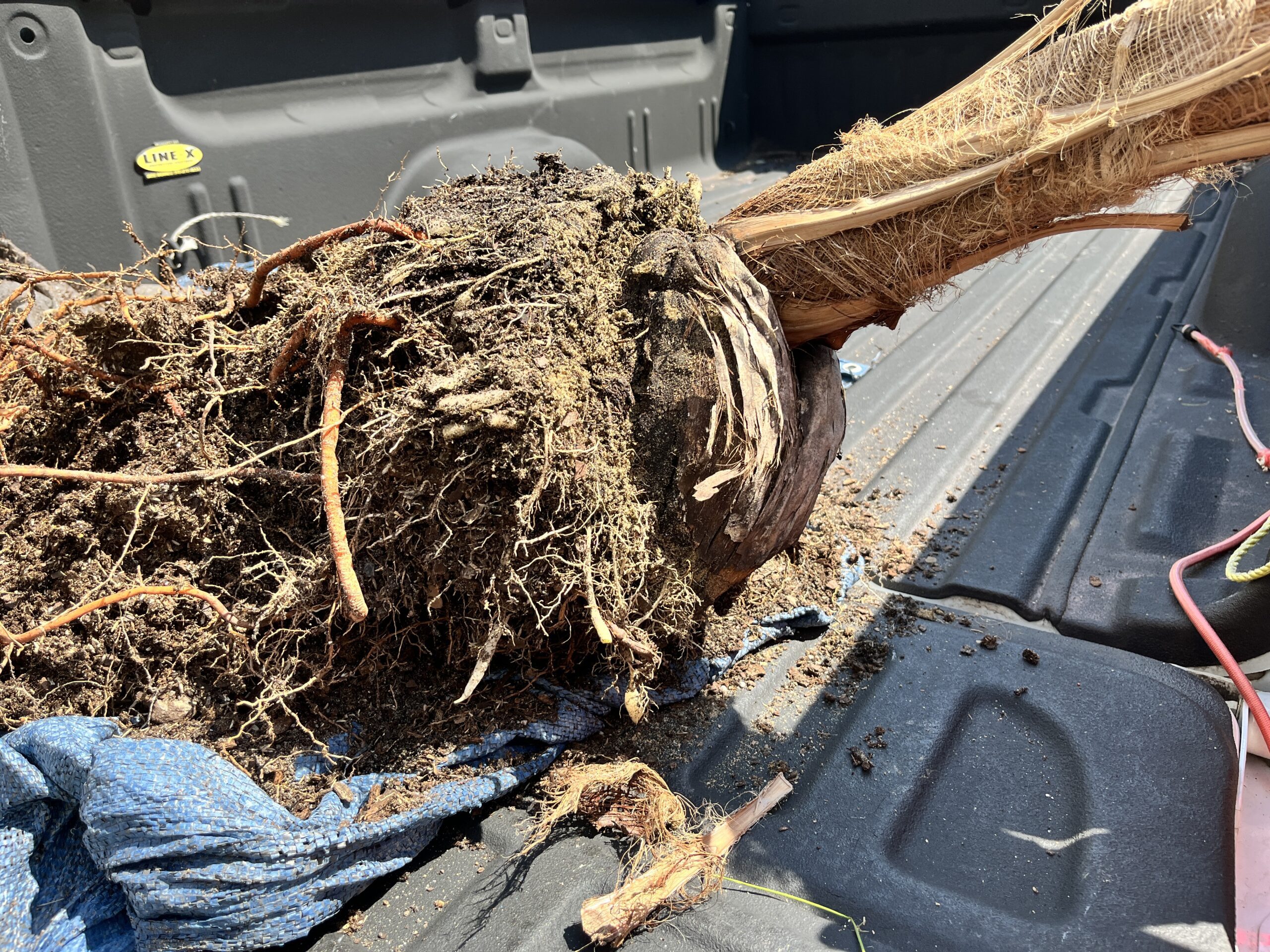Native Annuals with Ecological Horticulturist Ryan Drake
A walk through the Botanical Garden reveals dynamic, complex plantings around every corner. But there is more to those lively blooms and varying textures than aesthetic appeal.
This summer, in the Dorothy and Max Rutledge Conifer Garden and Lauridsen Savanna, Ecological Horticulturist Ryan Drake is conducting an experiment. Ryan has been monitoring roughly 20 native annual species throughout the season for performance, growth habit, bloom duration, form and reseeding potential. The plants that perform best will be considered for use in future plantings at the Botanical Garden.
The annuals in focus aren’t the typical varieties you’d find in a curated garden—they’re more often found on the side of the road, in urban sidewalk cracks and other places not typically used for horticultural inspiration. Through this study, Ryan looks to reevaluate these “weedy” varieties and repurpose them for more intentional, biodiverse garden spaces.
“I am interested in how value is attached to such ‘wild’ species ecologically, aesthetically and culturally, especially in the context of designed plant communities in urban spaces,” Ryan says.
Although the project is ongoing, Ryan shares five highlights from the study so far:
1. Froelichia floridana (Plains snakecotton)

Plains snakecotton is in the family Amaranthaceae, a family with both agriculturally valuable and weedy species. Froelichia floridana has flower spikes that turn woolly as it matures in late summer, and although the flowers don’t have petals, the spirals of white, woolly blooms attract wool carder bees (Anthidium spp.), which seek out those fibers to make their solitary nests. Plus, it is wind pollinated and self-fertile. Overall, it’s a gorgeous, functional choice in planting designs.
2. Verbesina encelioides (golden crownbeard)

This species has grown in very nicely, responds to cutting and continues to flower throughout the season. Ryan has found it prefers the sunniest and driest spots in the Rutledge Conifer Garden. It’s a tough plant, requiring little watering once established. Unlike many annuals, which take considerable time, water and energy to keep up with through the hot summer months, Verbesina allows gardeners to cut back on these efforts, and it attracts a diverse array of native bees.
3. Monarda citriodora (lemon beebalm)

Another great performer and stunning addition to the Rutledge Conifer Garden is lemon beebalm, an annual bergamot. Like the Verbesina, it has been a lavender-and-magenta powerhouse all summer and now into fall. The dazzling inflorescences are attractive to gardeners and bees alike. Ryan is also interested in the reseeding potential for this annual; in the wild, it is often found in colonies.
4. Eriogonum annuum (annual buckwheat)

This is another species with a woolly texture that gives plantings a soft sheen, especially in morning light. Annual buckwheat can be either an annual or a biennial—every plant is different (though most are annuals)! Some plants have already flowered and some have persisted as rosettes, which will overwinter and flower next season. Plants in the wild hedge their bets with variable life histories that allow them to thrive and persist no matter what nature throws their way. The pearly flowers are small but together offer a lovely, ghostly haze. These small blooms are supported by an unbranched stem with sparse slivery, fuzzy leaves. Plant architectures and adaptations like these actually help the plant tolerate drought while also being visually striking and versatile in planting designs.
5. Argemone albiflora (bluestem pricklypoppy)

Senior Horticulturist Aaron Harpold used bluestem pricklypoppy in his design of the EMC Insurance Companies Entry Garden this season. It has grown into its own in this garden, filling in rather nicely. The blooms are a delicate and silky paper-white flower with a bright lemon latex. This structure has attracted an assortment of native bees in various shapes and sizes. The prickly name comes from its spiky leaves that have gorgeous blue tones, which add a great textural element to any planting design. The horticulture team is curious to observe how this plant’s architecture stands and changes in color into late fall and early winter to evaluate it for multi-season use.







